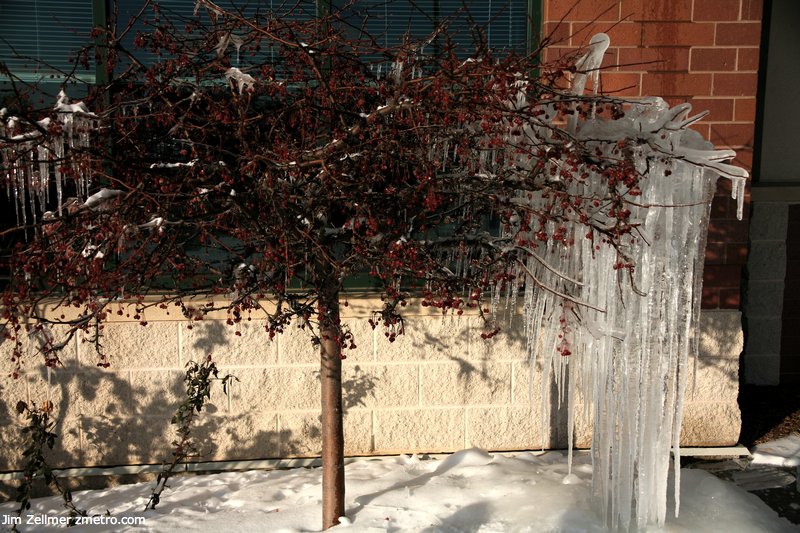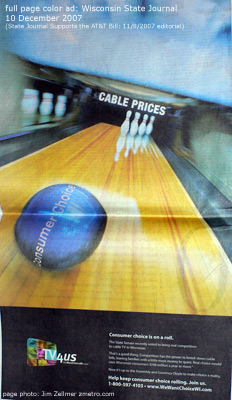The digitized specter of cyberwar is haunting the boardrooms, barracks, and law offices of America. China’s audacious September 2007 infiltration of secure Pentagon networks and government servers in several other nations has powerfully demonstrated that cyberwar’s moment has arrived. Cybersecurity analysts have estimated that 120 different nations are working to evolve cyberwar capabilities. Most of today’s current cyberwar operations involve hackers probing civilian and military networks for vulnerabilities and restricted information, operations that focus less on disruption than recon and surveillance.
Venti Capitalists
Taylor Clark ought to know how Starbucks got its roc-like wingspan. That’s the tale by which we want to be spellbound. Clark quotes a 1997 Larry King interview with Howard Schultz, the company’s chairman, where Schultz outlines what should have been the plot of Clark’s book:
“People weren’t drinking coffee. … So the question is, How could a company create retail stores where coffee was not previously sold, … charge three times more for it than the local doughnut shop, put Italian names on it that no one can pronounce, and then have six million customers a week coming through the stores?”
12th Annual Lump of Coal Awards
At most holiday feasts, the second helping is more filling than the first.
That should be the case in my annual buffet of fund buffoonery, the 12th annual Lump of Coal Awards, recognizing managers, executives, firms, watchdogs and other fund-industry types for action, attitude, behavior or performance that is misguided, bumbling, offensive, disingenuous, reprehensible or just plain stupid.
Last week, I highlighted 10 award winners who deserved nothing more than coal in their holiday stocking this year. Here are the rest:
Failing to get out the vote: Managers of the Blue funds. The tiny Blue funds allow Democrats to invest in companies that “act blue” and “give blue.” Beyond that, management claims to be “actively engaging in shareholder resolutions and proxy voting in an effort to promote increased transparency in corporate political giving.”
How Safe Is Your Salad?
Late in August 2006, the federal Centers for Disease Control and Prevention in Atlanta began investigating cases of severe food poisoning reported by health officials in 26 states and one Canadian province. Over the next six weeks, a rare and particularly virulent strain of Escherichia coli 0157:H7 sickened more than 200 people across North America, hospitalizing half of them, some with severe kidney damage, and killing two elderly women and a child. For epidemiologists, the outbreak presented a breakthrough because a DNA-fingerprinting system enabled CDC investigators to trace the source of the infections from clusters of cases nationwide.
Bacteria in stool samples of hospitalized patients were genetically matched to pathogens in packaged, “ready to eat” Dole brand spinach that they had recently purchased and consumed. Further, product codes on the bags indicated that the contaminated greens had been processed during one shift on Aug. 15 at a plant in San Juan Bautista then owned and operated by Natural Selection Foods. The company’s records showed that the spinach had been harvested from four fields in Monterey and San Benito counties.
Cattle rustling on the rise in California
The other day, two young heifer calves were stolen from a dairy in Tulare County. The thieves drove them to Kings County, where they apparently discovered to their chagrin that the animals were branded.
That would make selling them difficult. If they tried to sell the calves at a livestock auction, the state brand inspectors would want to see proof of ownership. Cops on the case think the thieves figured they were toast. So, they simply tossed the animals out of their car in downtown Hanford, in front of the flour mill at Sixth and Green streets, and drove away. A car came by and struck and killed one of the calves. The other one wandered a mile away, ending up in a man’s front yard.
There was weariness in Greg Lawley’s voice as he told the story. “They have no regard for animals,” said Lawley, chief of the Bureau of Livestock Identification at the California Department of Food and Agriculture.
“Makes you sick,” Lawley said of cattle rustling redux.
Pre Steroid Era Brewer Logo?

I saw a young man wearing a classic Brewers baseball cap earlier today. It occurred to me that this is the “pre steriod era” logo.
‘Cartographia’ Showcases Maps as History, Art
Vincent Virga’s Cartographia is a rare collection of 250 color maps and illustrations drawn from the world’s largest cartographic collection at the Library of Congress. The collection spans everything from maps of ancient Mesopotamia, to maps of Columbus’ discoveries, to contemporary satellite images and maps of the human genome.
Virga says that maps are like time machines — they reveal as much about the society that created them as they do about the geography of the places they describe.
Virga discusses the collection, which he culled from the Library of Congress’ millions of maps and tens of thousands of atlases.
Madison Winter Storm Residue

Finding the Right Digital Photo Frame
As digital cameras proliferate, consumers want to make use of all of those pictures they’re taking. Many of them wind up buried on computer hard drives. But it’s getting easier to take those photos and display them on a digital photo frame in the living room.
These photo frames look just like any other picture frame from a distance. But they are, in fact, small liquid crystal displays that can change the photos on display every few seconds. For romantics and technology Luddites, that is a kind of blasphemy, a reflection of a fickle age where not even a still image can remain constant.
But who says you have to look at the same pictures of your relatives on the mantel for all eternity? Sometimes, change is good. That’s why digital photo frames were the No. 2 consumer technology gift on Black Friday, just behind navigation devices, according to market researcher NPD Group. Sales were up 171 percent compared with a year ago.
Picking a good digital photo frame is a matter of looking at the display and checking out its quality. If it looks good, that’s a clue.
Rolling Over for AT&T: “Video Competition” Bill is a Major Missed Opportunity for Wisconsin
A reader forwarded this full page, color advertisement paid for by large telco (AT&T, etc.) front group TV4us. The advertisement appeared in this morning’s Wisconsin State Journal. The State Journal supports the AT&T “video competition bill”. 
Click to view a larger version
Brian Clark has more:
Vergin said he’s pleased he’ll only have to get one state franchise, instead of having to deal with the 33 different municipalities in his service area.
“That’s a big benefit for us and what I think the bill is all about,” he said.
Vergin said his company’s prices won’t be any lower than Charter’s. But he’s convinced his firm will be able to offer better service and options to bundle cable, phone and wireless service.
He said he was opposed to proposed rules that would have required his company to serve entire communities. He also rejected suggestions telecommunications firms should be ordered to run fiber optic to homes and businesses.
“The 100 requirement would limit us,” he said. “And we are running fiber optic to new construction, but not existing buildings. I just don’t think the government should tell us what technology we should use. The market should decide that. I also think have 50 percent of any area covered is better than none.”
…..
(Charles) Higley (Citizen’s Utility Board Executive Director) said he, too, would have liked to have seen a requirement that companies build fiber optic cable.
“We’ve had promises to build it before and it didn’t come,” he said. “In the future, if not already, broadband is an essential service like telephone and electricity. We think government should require essential services.”
The Governor and Legislature appear to have obtained nothing while giving away significant regulatory changes. A disaster for Wisconsin business, schools residents and public agencies. What a deal for the large telcos: spend money on lobbying and advertising but not fiber to the home. Classic rentier approach: milk the slow copper network that we’ve paid for many times over as long as possible.
Keep in mind Verizon’s FIOS, a fiber to the home product installed in many communities [Service Map] – none in Wisconsin.
I recently had the opportunity to use basic FIOS service while on travel. The service was symmetrical – that is, upload and download speeds are the same. Local dsl services are not symmetrical – AT&T and TDS limit upload speeds to a very slow 768kpbs.
This archaic approach is awful for those of us creating, uploading and backing up media (photos, videos and music, not to mention data heavy scientific applications). FIOS provides at least 5 to 50X the speeds of the fastest dsl service generally available in the Madison area. Slow networks limit entrepreneurial opportunities, particularly emerging home based businesses.
Finally, I spoke briefly some years ago with then Gubernatorial candidate Jim Doyle at a campaign event. I mentioned Wisconsin’s very poor broadband infrastructure. He said he understood these issues but could not address them in his first term but hoped to in a second. Will Doyle leave a legacy of aging, slow copper networks? I put a call into Susan Goodwin, Chief of Staff, for an update.
——-
A bit of sugar for AT&T. This giant organization is fully capable of implementing a modern, high quality, fast fiber network. They simply need to make the strategic decision, as Verizon has, to upgrade their network. How much longer must we pay for the old, old copper lines? I’ve received excellent, economical service from AT&T’s cell network.
Background: